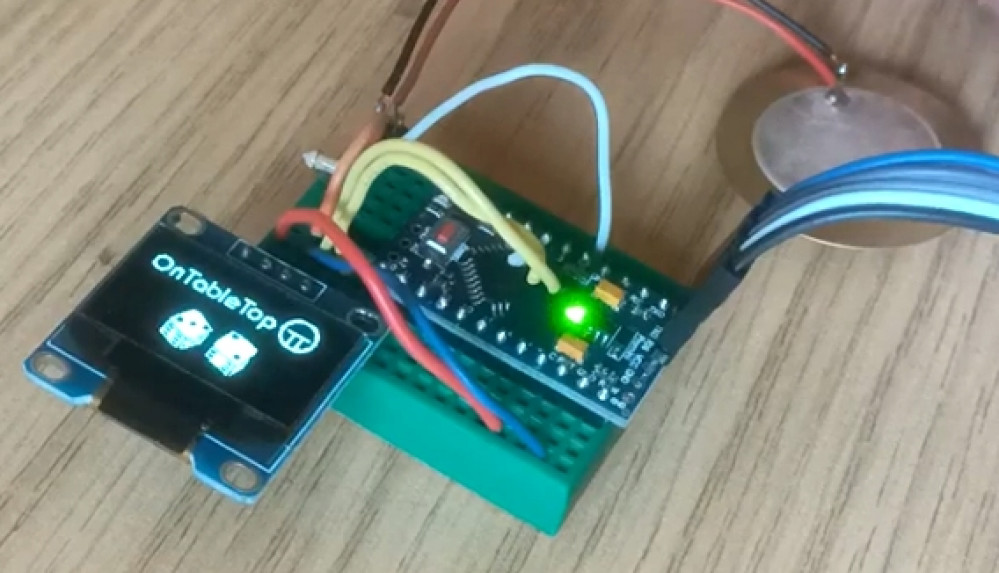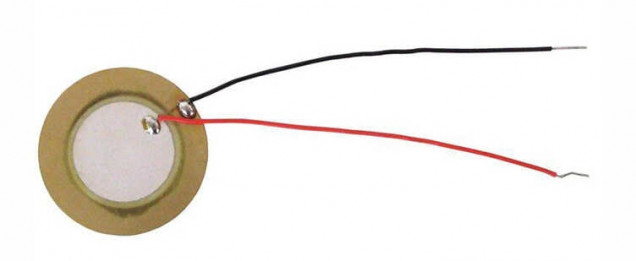
Digital dice roller
This is a piezo
This is a piezo.
Well, to give it it’s full name, a piezo-electric tranducer. They pop up in lots of things. Mostly in anything that makes a noise.
They’re like a super-cheap alternative to a speaker (but really poor quality). Apply a voltage across the leads and the disc will refract. Do this often enough and you can create a sound. Do it at a specific frequency, and it can play a “note” (though it’s more like an electronic chirp at a specific pitch – calling it a note suggests a degree of musicality that, frankly, it doesn’t posses).
But piezos aren’t just for turning electricity into noise. You can use them to turn noise into electricity. You’ll often find piezo-electric transducers strapped to the body of an acoustic guitar.
The vibrations in the wood of the body are transferred into the disc of the piezo, which is sent to an amplifier, to create an electronic signal (you can get “proper” pickups for electric guitars, which sit underneath the strings, but “piezo pickups” are also common – even through, strictly speaking, they’re not really pickups).
I thought I’d use this property to create a digital dice-roller – some gubbins in miniature base with a battery and a screen, which chose a random number between a range (1-6 for D6, 1-10 for D10) and displayed the result as a bitmap (depicting a dice value) on a tiny LCD screen.
Such a simple object doesn’t need a fancy UI – just a way of telling it “I want a new value now, please”. I figured that tapping the object down on the tabletop would be a perfect way to trigger such a request.
And a piezo would be the perfect way of accomplishing this.





























![How To Paint Moonstone’s Nanny | Goblin King Games [7 Days Early Access]](https://images.beastsofwar.com/2024/12/3CU-Gobin-King-Games-Moonstone-Shades-Nanny-coverimage-225-127.jpg)











































Leave a Reply